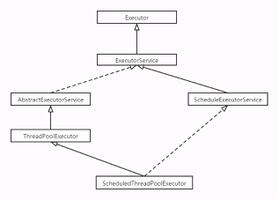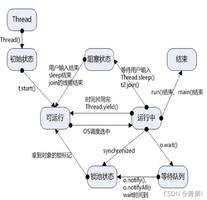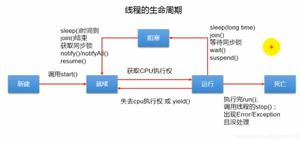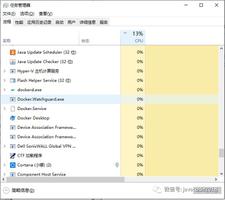Java多线程 线程组原理及实例详解
线程组
线程组可以批量管理线程和线程组对象。
一级关联
例子如下,建立一级关联。
public class MyThread43 implements Runnable{
public void run()
{
try
{
while (!Thread.currentThread().isInterrupted())
{
System.out.println("ThreadName = " + Thread.currentThread().getName());
Thread.sleep(3000);
}
}
catch (InterruptedException e)
{
e.printStackTrace();
}
}
public static void main(String[] args)
{
MyThread43 mt0 = new MyThread43();
MyThread43 mt1 = new MyThread43();
ThreadGroup tg = new ThreadGroup("新建线程组1");
Thread t0 = new Thread(tg, mt0);
Thread t1 = new Thread(tg, mt1);
t0.start();
t1.start();
System.out.println("活动的线程数为:" + tg.activeCount());
System.out.println("线程组的名称为:" + tg.getName());
}
}
输出结果如下
活动的线程数为:2
线程组的名称为:新建线程组1
ThreadName = Thread-0
ThreadName = Thread-1
ThreadName = Thread-0
ThreadName = Thread-1
ThreadName = Thread-1
ThreadName = Thread-0
ThreadName = Thread-1
ThreadName = Thread-0
······
每隔三秒输出两个线程名称,符合预期。
线程组自动归组属性
public class ThreadDomain49 {
public static void main(String[] args) {
System.out.println("A处线程:" + Thread.currentThread().getName() + ", 所属线程:" + Thread.currentThread().getThreadGroup().getName() +
", 组中有线程组数量:" + Thread.currentThread().getThreadGroup().activeGroupCount());
ThreadGroup group = new ThreadGroup("新的组");
System.out.println("B处线程:" + Thread.currentThread().getName() + ", 所属线程:" + Thread.currentThread().getThreadGroup().getName() +
", 组中有线程组数量:" + Thread.currentThread().getThreadGroup().activeGroupCount());
ThreadGroup[] tg = new ThreadGroup[Thread.currentThread().getThreadGroup().activeGroupCount()];
Thread.currentThread().getThreadGroup().enumerate(tg);
for (int i = 0; i < tg.length; i++)
System.out.println("第一个线程组名称为:" + tg[i].getName());
}
}
输出结果如下
A处线程:main, 所属线程:main, 组中有线程组数量:0
B处线程:main, 所属线程:main, 组中有线程组数量:1
第一个线程组名称为:新的组
没有指定线程组,则归属到当前线程所属的组。
根线程组
public class ThreadDomain50 {
public static void main(String[] args)
{
System.out.println(Thread.currentThread().getThreadGroup().getParent().getName());
System.out.println(Thread.currentThread().getThreadGroup().getParent().getParent().getName());
}
}
运行结果
system
Exception in thread "main" java.lang.NullPointerException
at com.advance.MultiThread3.MyThread.ThreadDomain50.main(ThreadDomain50.java:14)
当前线程的线程组的父线程组是系统线程组;系统线程组的父线程组不存在;系统线程组就是根线程组。
批量停止组内线程
请看示例
public class MyThread44 extends Thread{
public MyThread44(ThreadGroup tg, String name)
{
super(tg, name);
}
public void run()
{
System.out.println("ThreadName = " + Thread.currentThread().getName() +
"准备开始死循环了");
while (!this.isInterrupted()){}
System.out.println("ThreadName = " + Thread.currentThread().getName() +
"结束了");
}
public static void main(String[] args) throws InterruptedException {
ThreadGroup tg = new ThreadGroup("我的线程组");
MyThread44 mt = null;
for (int i = 0; i < 3; i++)
{
mt = new MyThread44(tg, "线程" + i);
mt.start();
}
Thread.sleep(5000);
tg.interrupt();
System.out.println("调用了interrupt()方法");
}
}
输出结果如下
ThreadName = 线程0准备开始死循环了
ThreadName = 线程1准备开始死循环了
ThreadName = 线程2准备开始死循环了
调用了interrupt()方法
ThreadName = 线程0结束了
ThreadName = 线程2结束了
ThreadName = 线程1结束了
可以看到,ThreadGroup的interrupt方法批量中断线程组的线程。
以上是 Java多线程 线程组原理及实例详解 的全部内容, 来源链接: utcz.com/z/312426.html








